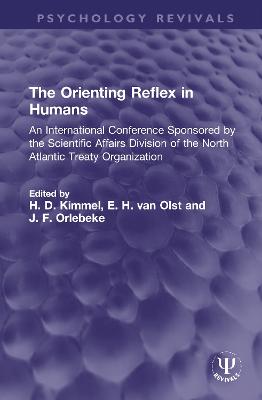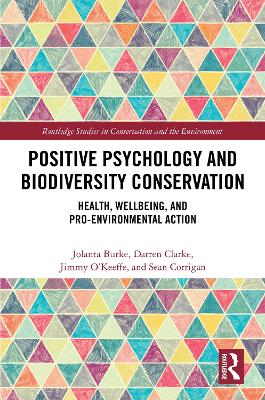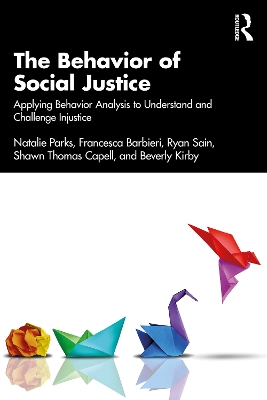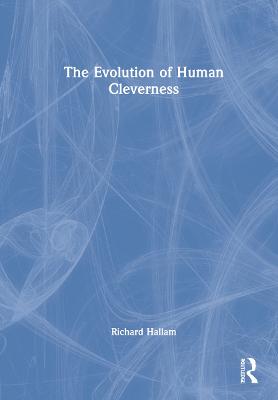Orienting Reflex in Humans
 portes grátis
portes grátis
Orienting Reflex in Humans
An International Conference Sponsored by the Scientific Affairs Division of the North Atlantic Treaty Organization
Orlebeke, J. F.; van Olst, E. H.; Kimmel, H. D.
Taylor & Francis Ltd
11/2021
766
Dura
Inglês
9780367774295
15 a 20 dias
1573
Descrição não disponível.
Prologue. Part 1: Physiological Mechanisms of the Orienting Reflex 1. The Orienting Reaction: Key to Brain Re-presentational Mechanisms 2. Habituation and the Orienting Reflex: The Dual-Process Theory Revisited 3. Orienting and Evoked Potentials 4. Event-Related Slow Potentials of the Brain as Expressions of Orienting Function 5. Maintenance and Habituation of the Phasic Orienting Response to Competing Stimuli in Selective Attention 6. Habituation of the Components of the AEP to Stimuli of Different Intensities 7. Interstimulus Interval Length and Habituation of the P300 Part 2: Cardiac and Motor Processes in Orienting 8. Distinguishing Among Orienting, Defense, and Startle Reflexes 9. Orienting Activity in Two-Stimulus Paradigms as Reflected in Heart Rate 10. Orienting and Defensive Cardiac Responses 11. Myocardial Performance and Stress: Implications for Basic and Clinical Research 12. Some Questions about the Motor Inhibition Hypothesis 13. A Psychobiological Approach to the Differentiation of Orienting and Defense Responses 14. Evaluation of Temporal Vasomotor Components of Orienting and Defensive Responses 15. Neonatal Heart-Rate Response to Auditory Stimuli Varying in Intensity over Trials Part 3: Orienting and Behavioral Plasticity 16. Unconditioned and Conditioned Orienting Reflex: Psychophysiological Investigations 17. Interrelationships Among Components of Orienting Behavior 18. Orienting Reflexes and Classical Conditioning in Humans 19. A Pavlovian Psychophysiological Perspective on the OR: The Facts of the Matter 20. The Effect of Stimulus Intensity and Intertrial Interval on Long-Term Retention of the OR 21. A Comparison of the Pupillary and Electrodermal Components of the Orienting Reflex in Sensitivity to Initial Stimulus Presentation, Repetition, and Change 22. The Effects of Representation of an Habituation Stimulus Coincident with a Period of High Arousal on Long-Term Habituation of the Electrodermal Orienting Response 23. Pavlovian First and Second Signal System Influences on the SCR Component of the Orienting Reflex 24. The Orienting Component of the Classically Conditioned GSR 25. The Orienting Response and Subjective Assessment of Stimulus Significance Part 4: Attentional and Cognitive Factors in Orienting 26. Monotony and Uncertainty in the Habituation of the Orienting Reflex 27. The Orienting Response, Attention, and Learning: An Information-Processing Perspective 28. Orienting Response and Information-Processing: Some Theoretical and Empirical Problems 29. The Interaction of Stimulus Information with Potential Stimulus Significance in Eliciting the Skin Conductance Orienting Response 30. Stimulus Significance and the Orienting Reaction 31. Orienting Reflex and Uncertainty Reduction in a Concept-Learning Task 32. Selective Attention and the Orienting Response Part 5: Personality and Individual Differences in the Orienting Reflex 33. The Orienting Reflex as a Personality Correlate 34. Orienting and Defensive Reflexes in the Detection of Deception 35. The Orienting Reflex in Anxiety and Schizophrenia 36. A Comparison of Auditory Behavior in the Premature and Full-Term Infant: The Effects of Intervention 37. Individual Differences in Infant Speech Perception: A Method of Assessment 38. Habituation and Conditioning of the Orienting Reflex in Intellectually Gifted and Average Children 39. Variations of the Orienting Response in Learning-Disabled Children 40. Extroversion Orienting Reaction Habituation Rate and Sensitivity to Visual Stimuli 41. Sex Differences in Habituation of the Orienting Reflex 42. Electrodermal Measures of Arousal in Humans with Cortical or Subcortical Brain Damage 43. Individual Differences in Orienting Response Magnitude Related to Academic Performance 44. Information Content of the Electrodermal Orienting Response 45. Differential Drug Action on Electrodermal Orienting Responses as Distinct from Nonspecific Responses and Electrodermal Levels 46. Applied Research and the Orienting Reflex: A Few Proposals. Author Index. Subject Index.
Este título pertence ao(s) assunto(s) indicados(s). Para ver outros títulos clique no assunto desejado.
CNV.;Vice Versa;cognitive function;GSR.;human learning;Or;habituation;Scr;Pavlov;Nonsignal Stimuli;conditioning;Pure Tone;perception;Tone;personality;Intertrial Interval;psychophysiological;Stimulus Intensity;evoked potentials;Scr Data;Habituation Trials;Heart Rate Deceleration;Sokolov's Model;Skin Conductance;Imperative Stimulus;Scr Magnitude;Orienting Response;CNV;Sokolovian Theory;Silver Silver Chloride Electrodes;Test Trial;CS Onset;Electrodermal Activity;Habituating Stimulus
Prologue. Part 1: Physiological Mechanisms of the Orienting Reflex 1. The Orienting Reaction: Key to Brain Re-presentational Mechanisms 2. Habituation and the Orienting Reflex: The Dual-Process Theory Revisited 3. Orienting and Evoked Potentials 4. Event-Related Slow Potentials of the Brain as Expressions of Orienting Function 5. Maintenance and Habituation of the Phasic Orienting Response to Competing Stimuli in Selective Attention 6. Habituation of the Components of the AEP to Stimuli of Different Intensities 7. Interstimulus Interval Length and Habituation of the P300 Part 2: Cardiac and Motor Processes in Orienting 8. Distinguishing Among Orienting, Defense, and Startle Reflexes 9. Orienting Activity in Two-Stimulus Paradigms as Reflected in Heart Rate 10. Orienting and Defensive Cardiac Responses 11. Myocardial Performance and Stress: Implications for Basic and Clinical Research 12. Some Questions about the Motor Inhibition Hypothesis 13. A Psychobiological Approach to the Differentiation of Orienting and Defense Responses 14. Evaluation of Temporal Vasomotor Components of Orienting and Defensive Responses 15. Neonatal Heart-Rate Response to Auditory Stimuli Varying in Intensity over Trials Part 3: Orienting and Behavioral Plasticity 16. Unconditioned and Conditioned Orienting Reflex: Psychophysiological Investigations 17. Interrelationships Among Components of Orienting Behavior 18. Orienting Reflexes and Classical Conditioning in Humans 19. A Pavlovian Psychophysiological Perspective on the OR: The Facts of the Matter 20. The Effect of Stimulus Intensity and Intertrial Interval on Long-Term Retention of the OR 21. A Comparison of the Pupillary and Electrodermal Components of the Orienting Reflex in Sensitivity to Initial Stimulus Presentation, Repetition, and Change 22. The Effects of Representation of an Habituation Stimulus Coincident with a Period of High Arousal on Long-Term Habituation of the Electrodermal Orienting Response 23. Pavlovian First and Second Signal System Influences on the SCR Component of the Orienting Reflex 24. The Orienting Component of the Classically Conditioned GSR 25. The Orienting Response and Subjective Assessment of Stimulus Significance Part 4: Attentional and Cognitive Factors in Orienting 26. Monotony and Uncertainty in the Habituation of the Orienting Reflex 27. The Orienting Response, Attention, and Learning: An Information-Processing Perspective 28. Orienting Response and Information-Processing: Some Theoretical and Empirical Problems 29. The Interaction of Stimulus Information with Potential Stimulus Significance in Eliciting the Skin Conductance Orienting Response 30. Stimulus Significance and the Orienting Reaction 31. Orienting Reflex and Uncertainty Reduction in a Concept-Learning Task 32. Selective Attention and the Orienting Response Part 5: Personality and Individual Differences in the Orienting Reflex 33. The Orienting Reflex as a Personality Correlate 34. Orienting and Defensive Reflexes in the Detection of Deception 35. The Orienting Reflex in Anxiety and Schizophrenia 36. A Comparison of Auditory Behavior in the Premature and Full-Term Infant: The Effects of Intervention 37. Individual Differences in Infant Speech Perception: A Method of Assessment 38. Habituation and Conditioning of the Orienting Reflex in Intellectually Gifted and Average Children 39. Variations of the Orienting Response in Learning-Disabled Children 40. Extroversion Orienting Reaction Habituation Rate and Sensitivity to Visual Stimuli 41. Sex Differences in Habituation of the Orienting Reflex 42. Electrodermal Measures of Arousal in Humans with Cortical or Subcortical Brain Damage 43. Individual Differences in Orienting Response Magnitude Related to Academic Performance 44. Information Content of the Electrodermal Orienting Response 45. Differential Drug Action on Electrodermal Orienting Responses as Distinct from Nonspecific Responses and Electrodermal Levels 46. Applied Research and the Orienting Reflex: A Few Proposals. Author Index. Subject Index.
Este título pertence ao(s) assunto(s) indicados(s). Para ver outros títulos clique no assunto desejado.
CNV.;Vice Versa;cognitive function;GSR.;human learning;Or;habituation;Scr;Pavlov;Nonsignal Stimuli;conditioning;Pure Tone;perception;Tone;personality;Intertrial Interval;psychophysiological;Stimulus Intensity;evoked potentials;Scr Data;Habituation Trials;Heart Rate Deceleration;Sokolov's Model;Skin Conductance;Imperative Stimulus;Scr Magnitude;Orienting Response;CNV;Sokolovian Theory;Silver Silver Chloride Electrodes;Test Trial;CS Onset;Electrodermal Activity;Habituating Stimulus







